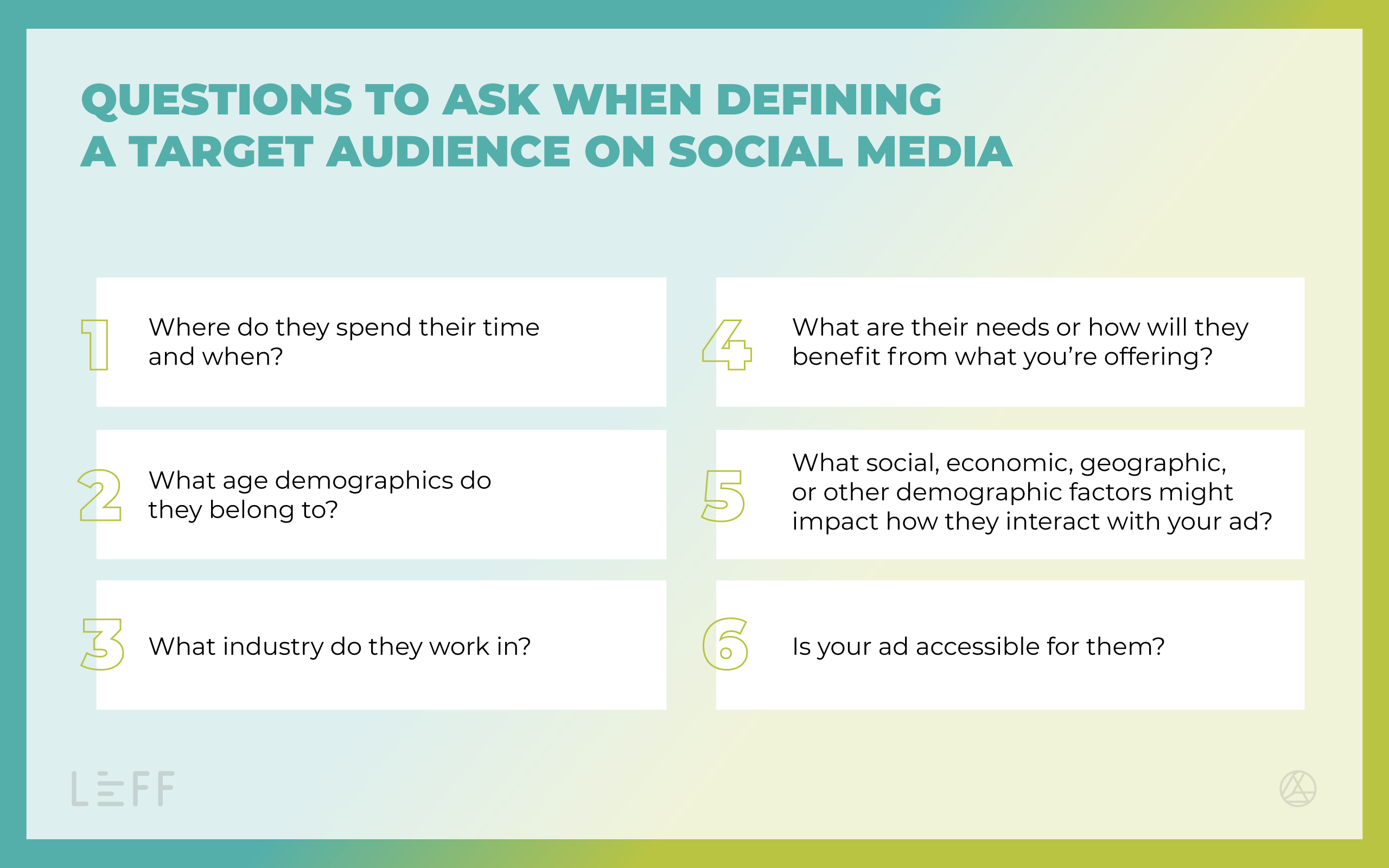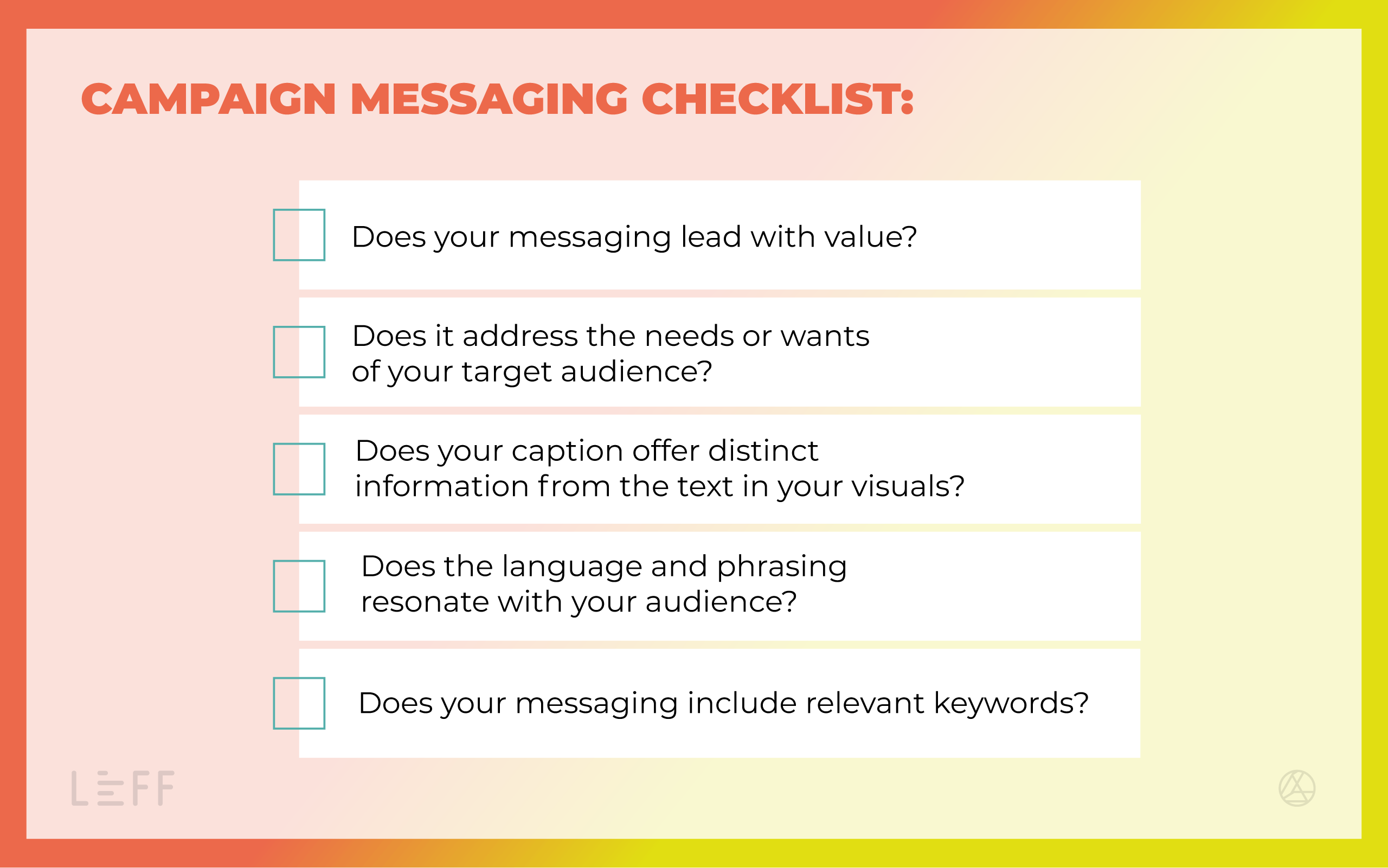Three-quarters of all marketers run paid social campaigns. So if you’ve pondered or even dabbled in the space, you’ve likely felt a bit overwhelmed with how to make your campaign stand out from the crowd. My colleague Annie Hanigan and I want to help with that.
While every channel has unique capabilities, features, and (if you’re using them correctly) audience segmentation, this guide can serve as the foundation for a strong and successful paid campaign on social media.
1. A clearly defined audience
Before you begin crafting messaging or visual concepts for a paid campaign, first define who your target audience is. This entails understanding key details about them that will allow you to create more tailored ads, such as through geotargeting, and therefore extend the value of your paid investment. Knowing who you are speaking to also helps you invest your campaign dollars where those individuals are most active. For example, a leading consulting firm’s main audience may be, for the majority, business-oriented and spend most of their time on LinkedIn. But for a recruiting campaign, they may run ads on Instagram to attract a demographic of recent graduates and early-career job seekers.
2. Realistic goals and meaningful KPIs
Establishing achievable campaign goals and meaningful key performance indicators (KPIs) is critical for measuring your campaign’s performance, potential, and ROI. Some common goals for paid campaigns include increasing sales, brand awareness, or social media following. You should treat your paid ads as components of a long-term marketing investment and understand that you’ll need to refine your ads over time to meet your goals. Understanding your data and what the numbers mean will give you a realistic view into whether your campaign is performing well and what adjustments to make. It may not be realistic to expect 1,000 new subscribers in a week, but monitoring your campaign weekly and tailoring it along the way to reach more potential subscribers is the best way to see if, indeed, your campaign goals are achievable and worth investing in.
Many platforms prompt you to choose a desired campaign goal to make it easier to follow the pertinent KPI’s for your campaign. For example, Instagram provides three categories of calls to action, each with sub-options, including awareness, consideration, and conversions.
3. Tailored and purposeful messaging
Knowing how to capture your audience’s attention through visuals is important. But knowing how to keep that attention through messaging will bring you even closer to meeting your campaign goals. Lead with the value you are offering to your target audience, and incorporate language that will resonate with them. For example, for a client campaign with the goal of boosting awareness for new office locations, we lead with the value of having a local, in-person team to work with, understanding that the audience would find that beneficial. Incorporating the right keywords into your messaging will also allow you to reach the most relevant audience within a platform’s algorithm standards.
If you’re struggling to reach a new audience or get them to interact with your company in a different way than they traditionally have, try linking your goals to successful messaging you’ve used in the past. For example, if you want people to sign up for your newsletter but they seem more interested in signing up for demos, promote your demos in your regular newsletters and frame your call to action around newsletter signups.
4. A firm but flexible budget
Yes, your budget can (and should) be firm, but you can build in flexibility. Starting small and adjusting as you monitor performance over time will likely bring you the most value for your overall budget—though keep in mind that some platforms, including LinkedIn and Facebook, have daily spending minimums. Depending on your offering, your audience, and your campaign goals, you may not need to exhaust all of your determined budget. For example, you may find that your audience is more engaged on Facebook during the weekends but more engaged on LinkedIn during the week. In this case, it might make sense to reduce spending or even pause your campaign on low-activity days. Finally, ensuring you understand how the lifetime and daily budgets work on each platform is critical for making sure your budget is being used by the platform’s algorithm in the most effective way.
5. Reporting and analytics
As is the nature of marketing, to get the most out of your paid campaign efforts, it needs to be an ongoing commitment. Track your performance, and adjust your campaign accordingly to stay on track to reach your goals. Data and analytics tools within platforms can provide free insight into your campaign performance across areas such as reach, engagement, demographics, total spending, total view time, conversion rate, and more. For added insights, consider using a plugin such as Meta’s Pixel or LinkedIn’s Insights Tag to track engagement and performance on the page you’re directing your traffic to.






Leave a Reply
You must be logged in to post a comment.